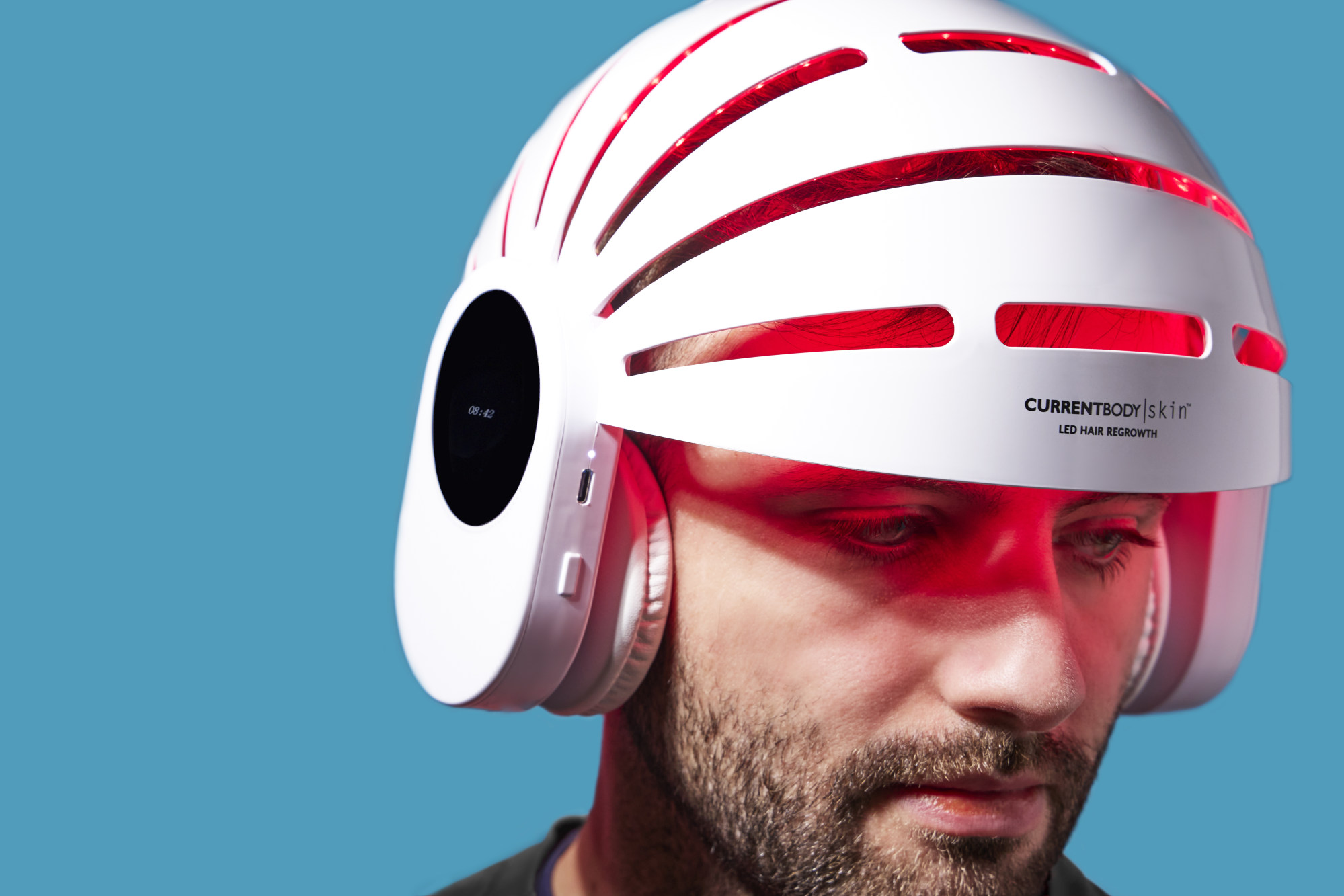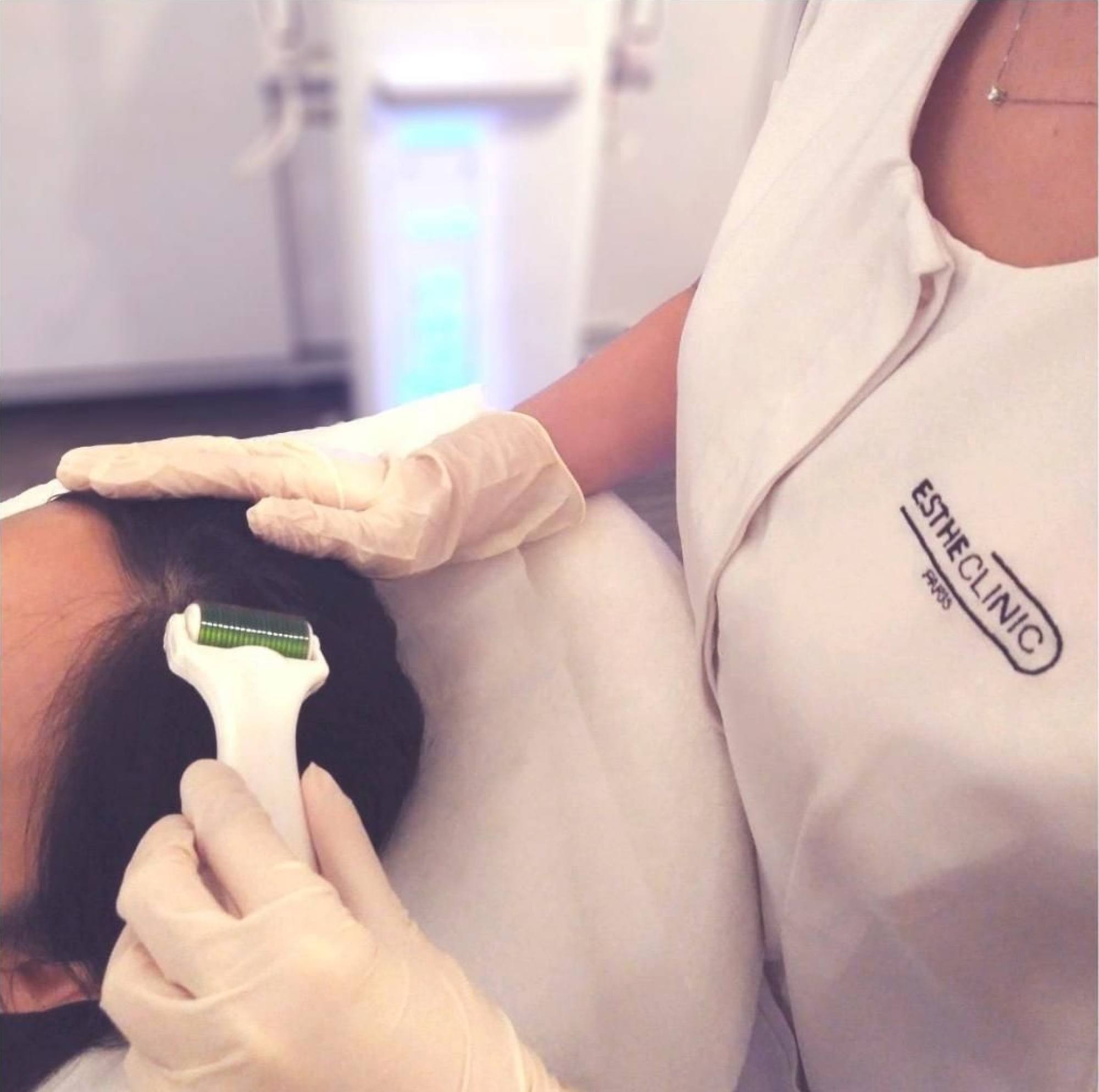How to treat hair loss with non-invasive technologies, from LED and low-level laser therapy (LLLT) to microneedling, which all boast less side effects and downtime, and can be performed at home

Hair loss affects millions worldwide and goes beyond cosmetic concerns; it also relates to one’s self-esteem and how we are perceived by others. It can be caused by genetics, hormonal changes, stress or medical conditions, and therapies to treat it have ranged from medications and supplements to surgical interventions, each carrying its own set of limitations and side effects.
However, the tide is turning towards a more modern approach: non-invasive technology methods.

In recent years, treatments such as microneedling and LED and laser therapy have emerged as superstars in the battle against hair loss, gaining popularity not just for their efficacy, but also for their ability to offer solutions without the need for surgical intervention or the long-term use of medications. The appeal of these treatments lies in their minimal downtime, reduced side effects and the convenience of at-home options alongside professional treatments.

Hair loss can stem from various sources. “As the most common cause of hair thinning for both men and women, pattern hair loss is a genetically driven condition that starves hair follicles of oxygen and essential nutrients. In women, this appears as overall thinning and widening of the midline. For men, it appears as crown balding and receding hairlines,” says Laurence Newman, CEO of CurrentBody, a company specialising in health and beauty technology devices for home use.
Liposuction 101: what you need to know, from expert to celebrity insights
In response, traditional treatments have long been the cornerstone of hair loss management, with medications such as minoxidil, a topical solution, and finasteride, an oral prescription, widely used with varying degrees of success. However, the necessity for continuous use to maintain results, potential side effects, and the variable response among different people have led many to seek alternatives.

Among non-invasive treatments, light-emitting diode (LED) therapy stands out as a promising option, leveraging the power of light to rejuvenate and heal by using specific wavelengths of light to target skin and hair follicles to encourage hair growth. In exploring the landscape of treatments, a wide range of options are available, ranging from professional interventions to at-home solutions.
Among the latter, Solaris Laboratories NY’s LED Hair Growth Stimulating Brush, which uses a combination of red and blue LED lights, stands out as a market leader. “The red light is great for energising your hair cells, making your hair grow thicker and faster. It’s also handy for reducing hair breakage. And the blue light is all about keeping your scalp healthy and inflammation-free,” says Anthony Davis, Solaris Laboratories’ head trainer.

How celeb-loved Thomasine Barnekow revived the habit of wearing gloves
The combo of LED lights and vibrations is a power duo. “It makes sure your scalp gets all the nutrients it needs, setting the stage for better hair growth,” Davis explains. The result is an environment conducive to hair growth, where follicles weakened by hormonal, genetic or environmental factors can begin to thrive.
Regarding professional-grade treatments, clinics are pushing the boundaries of what’s possible with advanced technologies and personalised care protocols. In this domain, EstheClinic in Hong Kong emerges as a forerunner, offering an innovative and effective hair restoration and regrowth treatment. “Low-Level Laser Therapy (LLLT) delivers cool laser energy to the scalp tissue to strengthen the hair fibres and stop hair fall,” says Solène Verrot, managing director at EstheClinic Hong Kong.

A hair loss treatment plan at EstheClinic includes LLLT and a microneedle device called Le DermaBooster. “We first start with stimulation of the scalp with Le DermaBooster to restore strength and health to the hair, fight against hair loss and restore the scalp,” Verrot says, adding that this opens temporary microchannels in the top layers of the scalp. Then comes the LLLT, which delivers cool laser energy to the scalp tissue, which strengthens the hair fibre and stops hair falling. “It stimulates the hair follicles’ self-repair and slows down degeneration, while acting on blood and lymphatic circulation to restore hair growth,” Verrot explains.
5 lifestyle habits for healthier skin, from diet and exercise to sleep

On the at-home devices realm, the CurrentBody Skin LED Hair Regrowth Device emerges as a cutting-edge option for those seeking effective hair loss treatments from the comfort of their own homes. The device uses red wavelength to increase blood flow to the affected hair follicles, which boosts hair thickening and new hair growth. “The advantage of a home use device such as ours is that it’s convenient to use and can also be used to support in-clinic treatments you might be seeking,” Newman says.
Still, he highlights the importance of understanding what these treatments can and can’t do. “Dead hair follicles cannot be restored. This treatment is about halting thinning of hair and bringing improved growth, but it is not possible to restore follicles that are producing no hair at all.”

Gen Alpha beauty is on the rise – but how young is too young for a skincare routine?
That’s why gauging if someone is a good candidate involves evaluation to examine the hair loss stage and setting expectations before determining the best treatment plan. “Of course, the earliest we start treating hair loss, the better it is. But we can treat it even if hair loss has already started. As long as there is hair remaining on the area to be treated, it can be stimulated and improved.” Verrot explains.

When talking about at-home devices, Newman says it can be very challenging for them to predict results, given the wide range of hair loss conditions out there. “Consistency of treatment is key; you must be willing to commit to a 10-minute treatment every day, but the feedback has shown us that those with hair loss are willing to do that as treatment options are very limited,” he adds.
Regardless of the chosen path, setting realistic expectations and practising patience are essential in the journey toward hair restoration, as well as understanding that hair growth is a slow process, and improvements may take several months to become noticeable.

- Hair loss affects millions worldwide, leading to crown balding and receding hairlines in men, and hair thinning and widening of the midline in women
- It can be caused by genetics, hormonal changes, stress or medical conditions, and can impact one’s self-esteem; non-invasive treatments are gaining traction over medications, supplements and surgery